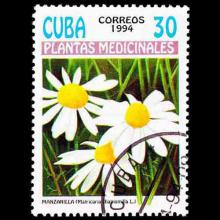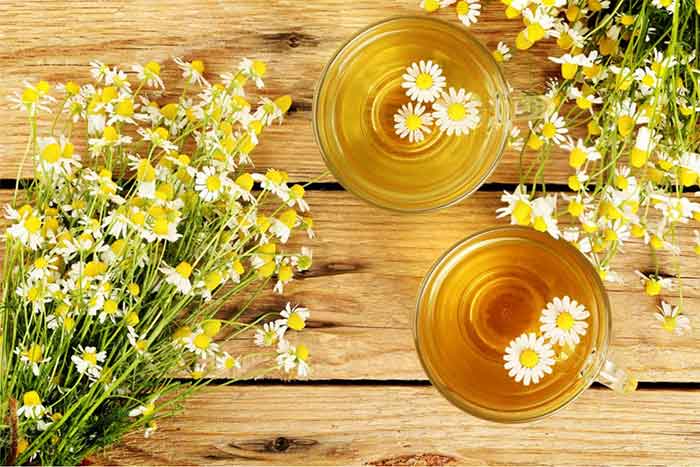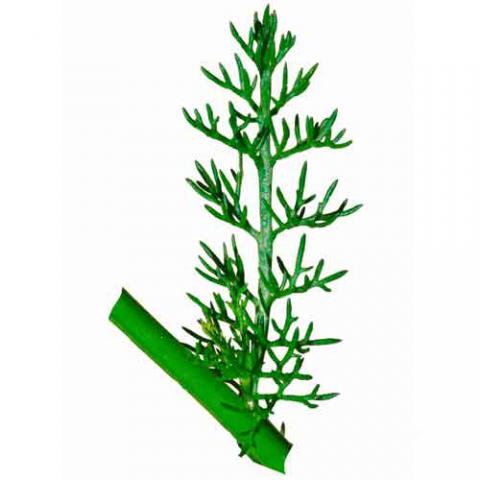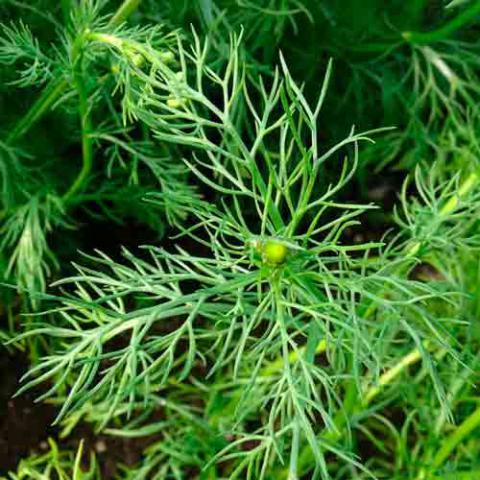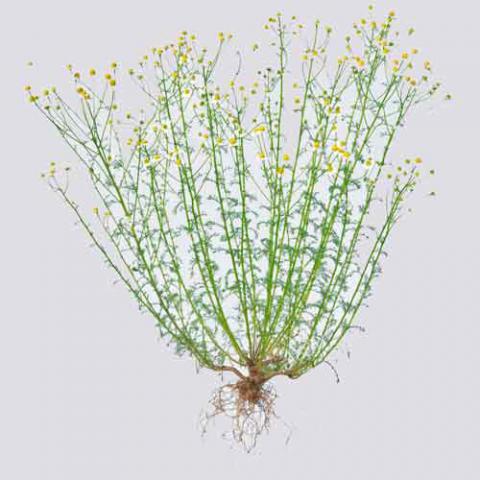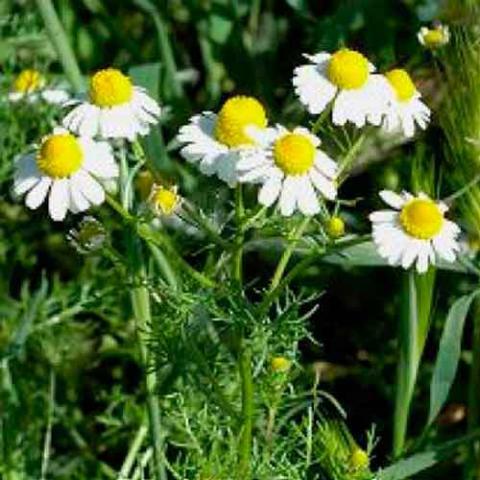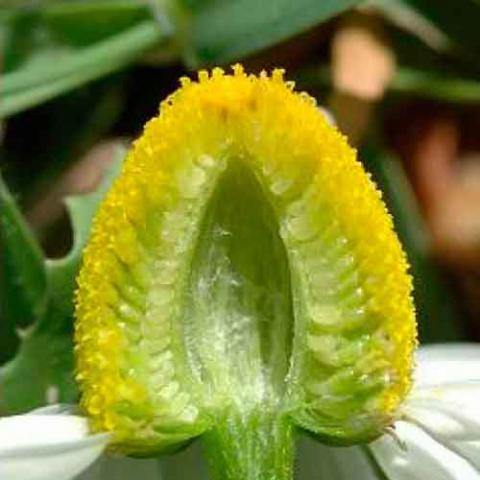NAME(S)
TAXONOMY
PLANTAE ID
THERAPEUTIC
Cuba
Issued:
Stamp:
Matricaria chamomilla
Cuba
Issued:
Stamp:
Matricaria chamomilla
Cuba
Issued:
Stamp:
Matricaria chamomilla
What are the benefits of chamomile tea?
Medically reviewed by Debra Sullivan, Ph.D., MSN, R.N., CNE, COI — Written by Zawn Villines, on January 6, 2020
Chamomile tea has long been used, as a traditional folk remedy, for a wide range of health issues. Nowadays, researchers are increasingly exploring its effectiveness in managing illnesses, including cancer and diabetes. So far, research into the potency of chamomile tea has shown promise. However, studies vary with some research proving clear benefits compared to alternative remedies, and others merely pointing to possible ones. For most people, chamomile tea is safe to try as a supplement to other treatments, but it should not replace mainstream medical treatments when people have serious illnesses.
What is Chamomile Tea?
The potency of various chamomile teas varies, with some containing significantly more chamomile than others. The more potent teas are also more likely to cause side effects in people who are vulnerable to them. Consequently, it is safest to start with a low dosage and work up to larger doses slowly. Chamomile contains chemicals called flavonoids. These flavonoids are a type of nutrient present in many plants, and they play a significant role in chamomile’s medicinal effects. Researchers are not sure yet what other chemicals are present in chamomile specifically and account for its benefits.
Benefits of Chamomile Tea
The potential benefits of chamomile tea, for which there is the most evidence, include:
- Reducing menstrual pain Several studies have linked chamomile tea to reduced severity of menstrual cramps. A 2010 study, for example, found that consuming chamomile tea for a month could reduce the pain of menstrual cramps. Women in the study also reported less anxiety and distress associated with period pain.
- Treating diabetes and lowering blood sugar Again, some studies have found that chamomile tea can lower blood sugar in people with diabetes. Research does not show that chamomile is a viable substitute for diabetes medications, but it may be a helpful supplement to existing treatments. Similarly, a 2008 study of rats found that consistent consumption of chamomile tea might prevent blood sugar from increasing. This effect reduces the long-term risk of diabetes complications, suggesting that chamomile could improve diabetes outcomes.
- Slowing or preventing osteoporosis Osteoporosis is the progressive loss of bone density. This loss increases the risk of broken bones and stooped posture. While anyone can develop osteoporosis, it is most common among post-menopausal women. This tendency may be due to the effects of estrogen. A 2004 study found that chamomile tea might have anti-estrogenic effects. It also helped promote bone density, but the study’s authors caution that further research is needed to prove this apparent benefit.
- Reducing inflammation Inflammation is an immune system reaction to fight infection. Chamomile tea contains chemical compounds that may reduce inflammation. However, long-term inflammation is linked to a wide range of health problems, including hemorrhoids, gastrointestinal pain, arthritis, autoimmune disorders, and even depression.
- Cancer treatment and prevention Some studies suggest that chamomile tea may target cancer cells, or even prevent those cells from developing in the first place. However, research so far is inconclusive, and scientists say more work is needed to prove chamomile’s anti-cancer claims. Also, most research has looked at clinical models in animals, not humans. A 2012 study compared the cancer-fighting powers of marigold and chamomile teas. Both were able to target cancer tumors selectively, but the effects of marigold tea were more potent.
- Helping with sleep and relaxation Chamomile tea is widely thought to help people relax and fall asleep. Few clinical trials have tested this, however. In one review of the current evidence, 10 of 12 cardiovascular patients are quoted as having fallen asleep shortly after consuming chamomile tea. A handful of other studies looking at clinical models also suggest that chamomile tea may help people relax. In a study using rats, chamomile extract helped sleep-disturbed rodents fall asleep. Many researchers believe that chamomile tea may function like a benzodiazepine. Benzodiazepines are prescription drugs that can reduce anxiety and induce sleep. Some research suggests that chamomile binds to benzodiazepine receptors. A review looking at the ability of chamomile tea to reduce anxiety is inconclusive. Some studies show a modest anti-anxiety benefit, but others do not.
- Treating cold symptoms Anecdotal evidence and some studies suggest that inhaling steam with chamomile extract can relieve some of the symptoms of the common cold. But this benefit is not proven yet.
- Treatment for mild skin conditions A small 1987 study found that applying chamomile extract directly to a wound assisted healing. Likewise, a few studies have found that chamomile ointments may help with eczema and mild inflammatory skin conditions, although they are not as effective as hydrocortisone cream.
Who should avoid chamomile tea?
The following groups should avoid chamomile unless advised otherwise by a doctor:
- People with a history of severe allergies, particularly to pollens: Chamomile may be contaminated with pollen from other plants so can cause an allergic reaction.
- People who have previously had an allergic reaction, even mild, to chamomile products: They should avoid chamomile, as allergic reactions can get worse with time.
- Infants and very young children: Chamomile tea, similarly to honey and some other natural products, may be contaminated with botulism spores. Most healthy adults can fight off the infection, but infants may not be able to. Many doctors recommend infants and young children avoid honey, and they should also avoid chamomile products. It is also not safe to use chamomile as a substitute for proven medical treatments. If someone is taking any medications, they should ask their doctor about potential interactions with chamomile tea.
Takeaway
Chamomile tea has been used in folk medicine for thousands of years, often with encouraging results. For now, however, it remains a supplement and not a medication. People interested in trying chamomile tea should use it as a supplement to, and not a replacement for their usual medication regimen. In regular doses, such as 1 to 2 cups a day, it is possible to see incremental health improvements.
Reference: medicalnewstoday.com
Genus species (Plantae): Matricaria chamomilla
(Synonym: Matricaria recutita)
The word chamomile comes from the Greek χαμαίμηλον (chamaimēlon) meaning "earth-apple", which is derived from χαμαί (chamai) meaning "on the ground" and μήλον (mēlon) meaning "apple". It is so called because of the apple-like scent of the plant.
Chamomile blue refers to chamazulene, the purified, deep-blue essential oil derived using steam distillation, rather than the plant itself.
Description
M. chamomilla has a branched, erect and smooth stem, which grows to a height of 15–60 cm (6–23.5 in). The long and narrow leaves are bipinnate or tripinnate. The flowers are borne in paniculate flower heads (capitula). The white ray florets are furnished with a ligule, while the disc florets are yellow. The hollow receptacle is swollen and lacks scales. This property distinguishes German chamomile from corn chamomile (Anthemis arvensis), which has a receptacle with scales. The flowers bloom in early to midsummer, and have a strong, aromatic smell.
Distribution
M. chamomilla can be found near populated areas all over Europe and temperate Asia, and it has been widely introduced in temperate North America and Australia. It often grows near roads, around landfills, and in cultivated fields as a weed, because the seeds require open soil to survive.
Uses
Herbalism
German chamomile is used in herbal medicine for a sore stomach, irritable bowel syndrome, and as a gentle sleep aid. It is also used as a mild laxative and is anti-inflammatory and bactericidal. It can be taken as an herbal tea, two teaspoons of dried flower per cup of tea, which should be steeped for 10 to 15 minutes while covered to avoid evaporation of the volatile oils. The marc should be pressed because of the formation of a new active principle inside the cells, which can then be released by rupturing the cell walls, though this substance only forms very close to boiling point. For a sore stomach, some recommend taking a cup every morning without food for two to three months. It has been studied as a mouthwash against oral mucositis and may have acaricidal properties against certain mites, such as Psoroptes cuniculi. One of the active ingredients of its essential oil is the terpene bisabolol. Other active ingredients include farnesene, chamazulene, flavonoids (including apigenin, quercetin, patuletin and luteolin) and coumarin. Dried chamomile has a reputation (among herbalists) for being incorrectly prepared because it is dried at a temperature above the boiling point of the volatile components of the plant.
Potential pharmacology
A 2006 review of the medical literature reported a number of beneficial effects for chamomile in in vitro and animal tests, but added more human clinical trials are needed before any firm conclusions can be drawn. Research with animals suggests antispasmodic, anxiolytic, anti-inflammatory and some antimutagenic and cholesterol-lowering effects for chamomile.
Chamomile has sped healing time of wounds in animals. It also showed some benefit in an animal model of diabetes. In vitro chamomile has demonstrated moderate antimicrobial and antioxidant properties and significant antiplatelet activity, as well as preliminary results against cancer. Essential oil of chamomile was shown to be a potential antiviral agent against herpes simplex virus type 2 (HSV-2) in vitro. The Chamomile oil is also evaluated for its efficacy against enuresis through the anticholinergic activity. Potential risks include interference with warfarin and infant botulism in very young children. The methanol extract of M. recutita showed potent antiallergic activity by inhibition of histamine release from mast cells in cell-mediated allergic models. A recent prospective clinical study found twice-a-day chamomile compresses were as effective as hydrocortisone 1% ointment on peristomal skin lesions in colostomy patients. In 2009, researchers at the University of Pennsylvania concluded the first controlled clinical trial of chamomile extract for generalized anxiety disorder (GAD). The results suggest chamomile may have modest anxiolytic activity in patients with mild to moderate GAD, although the results have not since been replicated.
- Volatile oils bisabolol, chamazulene, azulene & matricin are primarily responsible for anti-inflammatory, anti-spasmodic, and anti-microbial effects.
- Flavonoids like apigenin are antispasmodic and have sedative effects.
- Coumarins (umbelliferone) and anti-fungal and anti-bacterial.
- Sesquiterpene lactones possibly responsible for anti-allergenic effects.
Possible side effects
Chamomile, a relative of ragweed, can cause allergy symptoms and can cross-react with ragweed pollen in individuals with ragweed allergies. It also contains coumarin, so care should be taken to avoid potential drug interactions, e.g. with blood thinners. While extremely rare, very large doses of chamomile may cause nausea and vomiting. Even more rarely, rashes may occur. A type-IV allergic reaction with severe anaphylaxis has been reported in a 38-year-old man who drank chamomile tea.
Medicinal use
Matricaria is specific for use in all kinds of gastrointestinal disturbances associated with nervous irritability in the treatment of IBS and colitis. It’s safe to use in children and it’s powerful anti-inflammatory actions make it useful in almost any condition. Topically is is wound healing and a mild anesthetic useful for rheumatic & muscular pains and neuralgia.
Infusion
1-2 tsp/cup water; steep 3-5 min. covered; 1 cup TID. Tincture (1:5, 45%), 1-4 ml TID; max. weely dose 100 ml. Baths, Steams, Enemas. Note: Matricaria is best dosed on the low end of its dosage range over a long period of time.
Cultivation
Soil type: German chamomile will tolerate many soils, but prefers a sandy, well-drained soil with a pH of 7.0-7.5 and full sun.
In gardens, plants should be spaced 15–30 cm (6–12 in) apart. Chamomile does not require large amounts of fertilizer, but depending on soil tests, small amounts of nitrogen, phosphorus, and potassium should be applied before planting.
The amounts of major nutrients that German chamomile needs for growing and reproduction are:
- P = phosphorus 2,000 ppm (0.2%)
- K = potassium 10,000 ppm (1%)
- N = nitrogen 8,500 ppm (0.85%)
- S = sulfur 1,000 ppm (0.1%)
- Ca = calcium 5,000 ppm (0.5%)
- Mg = magnesium 2,000 ppm (0.2%)
References:
thenaturopathicherbalist.com
www.ncbi.nlm.nih.gov
Wikipedia

